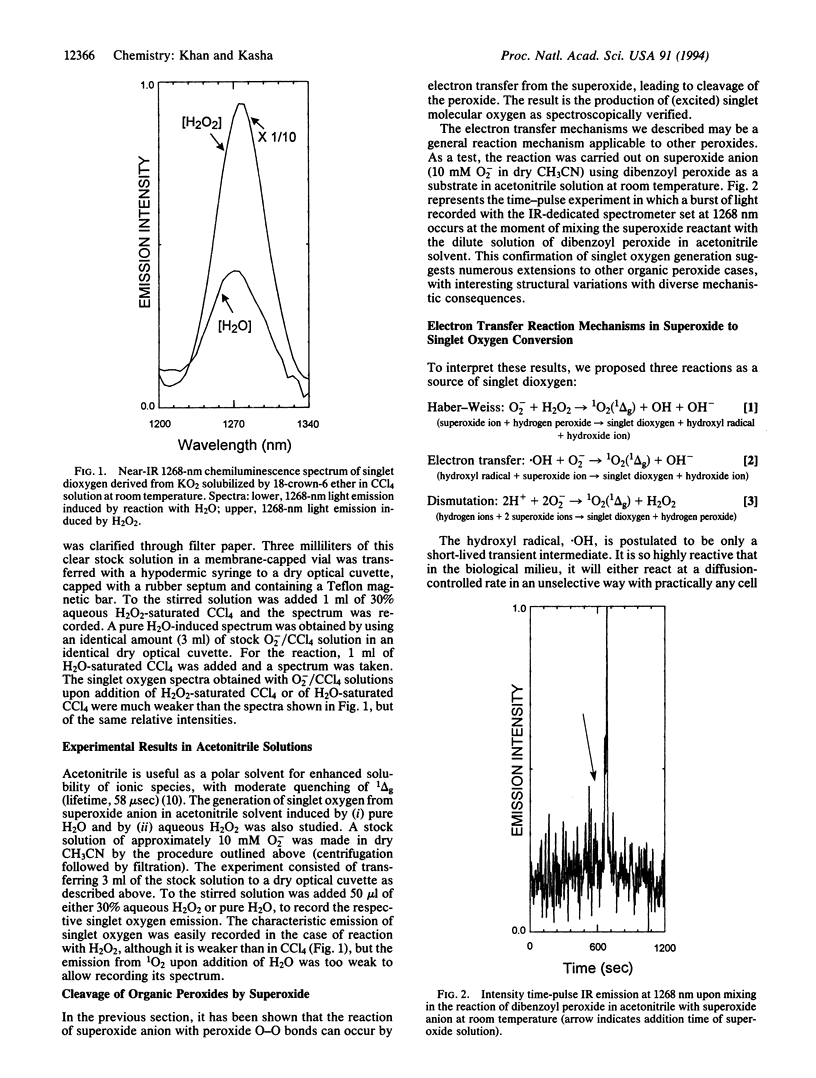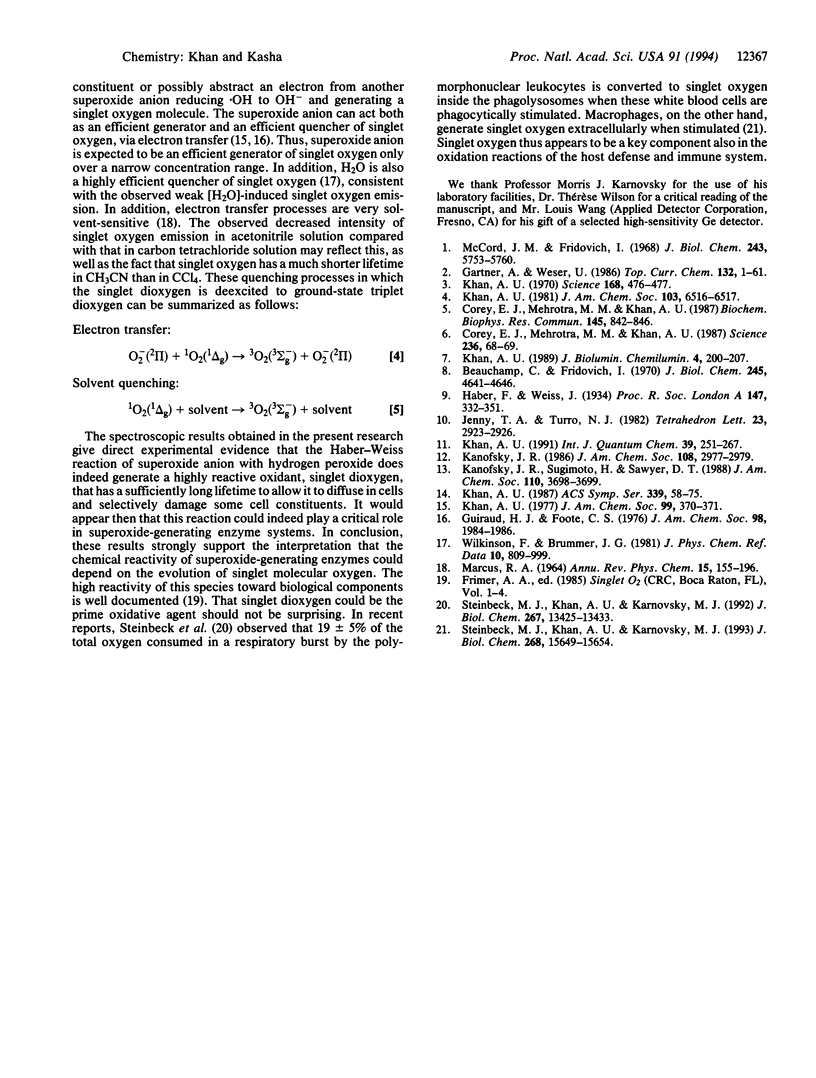Abstract
Characteristic chemiluminescence emission of singlet (1 delta g) molecular oxygen at 1268 nm is reported from a Haber-Weiss reaction. The reaction consists of mixing aqueous hydrogen peroxide with a solution of potassium superoxide, solubilized by 18-crown-6 ether in carbon tetrachloride or in dry acetonitrile at room temperature. Since the discovery of the enzyme superoxide dismutase by J.M. McCord and I. Fridovich [(1968) J. Biol. Chem. 243, 5733-5760], the identity of the reactive oxidant in superoxide-generating systems in biology has remained a chemical mystery. The results presented here suggest strongly that the reactive species is singlet oxygen generated via the Haber-Weiss reaction and not, as usually assumed, the hydroxyl radical, .OH, generated by the same reaction.
Full text
PDF


Selected References
These references are in PubMed. This may not be the complete list of references from this article.
- Beauchamp C., Fridovich I. A mechanism for the production of ethylene from methional. The generation of the hydroxyl radical by xanthine oxidase. J Biol Chem. 1970 Sep 25;245(18):4641–4646. [PubMed] [Google Scholar]
- Corey E. J., Mehrotra M. M., Khan A. U. Antiarthritic gold compounds effectively quench electronically excited singlet oxygen. Science. 1987 Apr 3;236(4797):68–69. doi: 10.1126/science.3563489. [DOI] [PubMed] [Google Scholar]
- Corey E. J., Mehrotra M. M., Khan A. U. Water induced dismutation of superoxide anion generates singlet molecular oxygen. Biochem Biophys Res Commun. 1987 Jun 15;145(2):842–846. doi: 10.1016/0006-291x(87)91041-2. [DOI] [PubMed] [Google Scholar]
- Khan A. U. Near infrared emission of singlet oxygen generated in the dark. J Biolumin Chemilumin. 1989 Jul;4(1):200–207. doi: 10.1002/bio.1170040129. [DOI] [PubMed] [Google Scholar]
- Khan A. U. Singlet molecular oxygen from superoxide anion and sensitized fluorescence of organic molecules. Science. 1970 Apr 24;168(3930):476–477. doi: 10.1126/science.168.3930.476. [DOI] [PubMed] [Google Scholar]
- McCord J. M., Fridovich I. The reduction of cytochrome c by milk xanthine oxidase. J Biol Chem. 1968 Nov 10;243(21):5753–5760. [PubMed] [Google Scholar]
- Steinbeck M. J., Khan A. U., Karnovsky M. J. Extracellular production of singlet oxygen by stimulated macrophages quantified using 9,10-diphenylanthracene and perylene in a polystyrene film. J Biol Chem. 1993 Jul 25;268(21):15649–15654. [PubMed] [Google Scholar]
- Steinbeck M. J., Khan A. U., Karnovsky M. J. Intracellular singlet oxygen generation by phagocytosing neutrophils in response to particles coated with a chemical trap. J Biol Chem. 1992 Jul 5;267(19):13425–13433. [PubMed] [Google Scholar]


